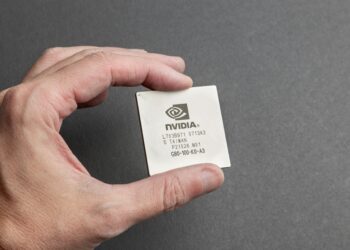What must go right for Advanced Micro Devices to make the leap from AI contender to trillion-plus juggernaut
Advanced Micro Devices’ (AMD) path to $1,000 per share is not fantasy—but it requires a perfect storm of execution, market expansion, and multiple durability. At $1,000, and assuming roughly 1.6–1.7 billion diluted shares, AMD’s market cap would exceed $1.5 trillion. To support that, investors need to see one (or a mix) of the following: outsized earnings power, a premium multiple, or both.
Earnings math. One plausible route is $40 EPS with a 25× P/E, or $25 EPS at 40× if growth visibility remains exceptional. Getting to $25–$40 EPS likely demands $120–$180 billion in annual revenue with 30–35% operating margins—levels achievable only if AMD becomes a top-two supplier in AI accelerators while defending its CPU lead and scaling embedded/FPGAs.
AI accelerators as the engine. The bull case centers on MI-series GPUs (and successors) gaining double-digit share of a multi-hundred-billion-dollar AI silicon market. Key milestones: (1) parity or lead on training/inference price-performance versus Nvidia for mainstream workloads; (2) ROCm software maturing into a true, developer-loved ecosystem; (3) hyperscalers committing to multi-year, multi-billion dollar frameworks that de-risk utilization. Custom silicon for large customers would add torque.
Defensible cores elsewhere. EPYC must keep share in data-center CPUs as x86 remains essential for general compute. Xilinx-derived adaptive compute (FPGAs/DPUs) should ride the edge/telecom/automotive wave, while semi-custom wins (consoles, AI PCs, enterprise accelerators) smooth cycles.
Multiple durability. To keep a 30–40× forward P/E, AMD needs a credible multi-year product cadence (Zen roadmaps, next-gen MI), visible supply at leading nodes, and recurring software/support revenue to reduce cyclicality.
Risks. Nvidia’s pace, Intel’s foundry+CPU comeback, supply constraints at cutting-edge fabs, and AI demand volatility could all compress either earnings or multiples.
Bottom line. A $1,000 share price is a bull-case scenario that hinges on AMD converting AI momentum into dominant, enduring platform economics. It’s ambitious—but not impossible—if accelerators scale, software moats deepen, and margins hold through the cycle.
You might like this article:Pfizer, Novo Nordisk Eye Metsera; Sarepta Sinks, Hertz Surges











